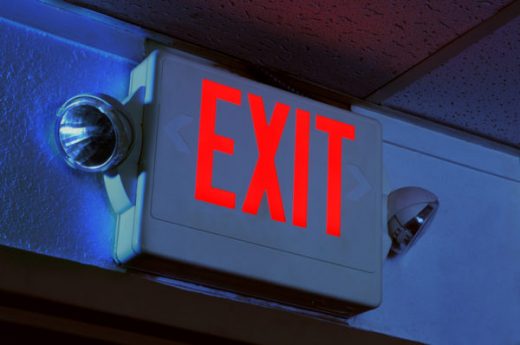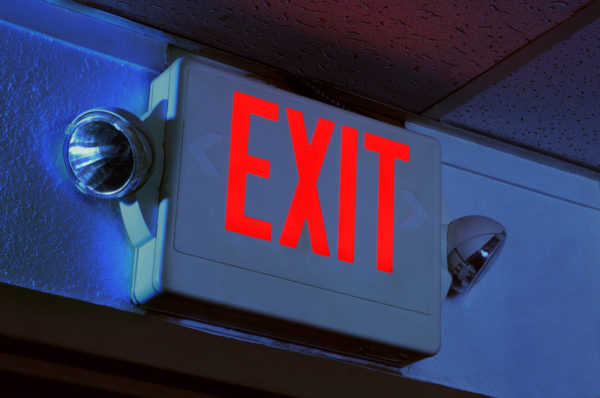Would it make sense for Tesla to buy Lyft?
Would it make sense for Tesla to buy Lyft?

This morning, after hearing about Tesla’s “big announcement” coming this afternoon, I speculated on Twitter that maybe the electric vehicle iconoclast was looking to buy ride-share firm Lyft.
It would definitely be a “new product” for them. But I was wrong, mea culpa.
Turns out it’s a new battery pack, a longer range, and a new “ludicrous” mode that will allow Teslas to be the fastest production cars on the road. All noble things, and worthy of announcing, if not necessarily worth building up so much beforehand.
But…what if?
Lyft has reportedly spurned a bid from current partner GM a week ago. GM plans to rolls out their new electric Bolt via Lyft as part of this partnership, and Tesla’s Model 3 competes with the Bolt.
See also: Get ready for a thermonuclear autonomous ride-hailing war
Since that news, rumors have also emerged that Lyft had also reached out to Apple, Google, Amazon and competitors Uber and Didi to discuss a sale.
Uber founder Travis Kalanick told his investors that Lyft wasn’t worth more than $ 2 billon, despite having a reported $ 1.4 billion cash in the bank.
Lyft slapped him and said they really didn’t want to go to the M&A prom anyway because they’re washing their hair that night. Recode reported that everyone has a price, and even with a valuation estimated at $ 5 to 6 billion, Lyft’s was reportedly $ 9 billion.
Kalanick also said he didn’t want the anti-trust issues that would ensue, but it’s not entirely clear if the two money-losing unicorns mating publicly like this would warrant federal scrutiny.
“(A merger) could take the pressure off margins for the combined company,” one fund manager who follows next-generation auto tech told ReadWrite. “But then it really just looks like a cab company with an app. We have those already. There’s no real monopoly, in most markets, in their core business today that would damage average buyers’ power.”
So if Lyft’s looking for an exit, Tesla may be the sign on that door.
It’s hardware versus software…again
The intersection of several trends and technologies may soon provide the place for Tesla and Lyft to collide.
Electric vehicle growth will likely be spurred by autonomous vehicle development, and carmakers from Volvo to Ford to Musk himself are now counting the time until a fully autonomous car hits the road in months, not years.
Add to that a sharing economy increasingly treating car ownership as a commodity and not status symbol, and it could become a challenging time to sell $ 135,000 electric cars no matter how awesome. And they are, without a doubt, awesome.
And it’s an interesting time for the entire “next-generation” auto industry as a whole, as it becomes clear that humans will not be behind the wheel in the future, or even if there will be a wheel in the future.
While this may seem mind-blowing to most car owners today, it’s just a new chapter in the Silicon Valley story of “Hardware vs. Software.”
In this corner, Team Hardware. It’s made up of virtually automaker on the planet, including Tesla, as well as car parts makers, agricultural and construction equipment companies, trucking firms, and ship builders. They’re looking for what happens next, and all roadsigns point towards “metal-as-a-service.”
Whether it’s an entire vehicle or just some of its components, the decades-old relationship with buyers for these huge brands is being unpacked by the new sharing economy audience and broken down into the basket of services that their products actually provide.
See also: The fight is on to win the $ 560b self-driving car market
Think of all of the advertising you’ve watched over the years from carmakers. Now, the attachment to the idea of owning a certain type of car, or a certain brand of equipment, starts to look gauzier by the day.
In the other corner, Team Software. That includes the ride-hailing giants like Uber and Didi, flush with cash but concerned everyone will figure out “oh, it’s just a cab company, kind of.” Add in Google, Baidu, retailers like Amazon, and shippers like FedEx — who’ve always looked at their fleets as dots on a global last-mile logistics planning map.
Those deliveries don’t happen without wings, wheels or hands. Or possibly, whatever appendages drones will use.
An integrated delivery ecosystem, whether it delivers a person or package, is their end game. If that means a new dimension in fleet management, so be it.
Add to that all of the safety concerns, regulatory needs and data infrastructure issues, and it’ll be a wild time take a ride — or even cross a street — in the coming years.
The post Would it make sense for Tesla to buy Lyft? appeared first on ReadWrite.
(33)



